THE XAMANISM
The introduction of North American Shamanism in Brazil by Carlos Sauer.
Born into a spiritualist family, Carlos Sauer comes from a long line of mediums (4th generation) working with spiritual healing. Sauer was always interested in matters related to spirituality and found his own spiritual path when he discovered the “Red Path”, also known as Shamanism.
In 1982, at just 22 years old, Sauer was invited by his sister Maria Lucia Sauer to study at the Esalen Institute in Big Sur, California, where he began to participate in indigenous rituals, such as the Sweat Tent, and was initiated as a Fire Man.
The introduction to shamanism took place in 1984, through the shaman anthropologist and author of the book ‘The Way of the Shaman’ Michael Harner (the diffuser of universal shamanism in the West), who became Sauer’s teacher, friend and later co-worker. This is how the young man who would become one of the great names of Shamanism in Brazil was introduced to North American Shamanic philosophy.
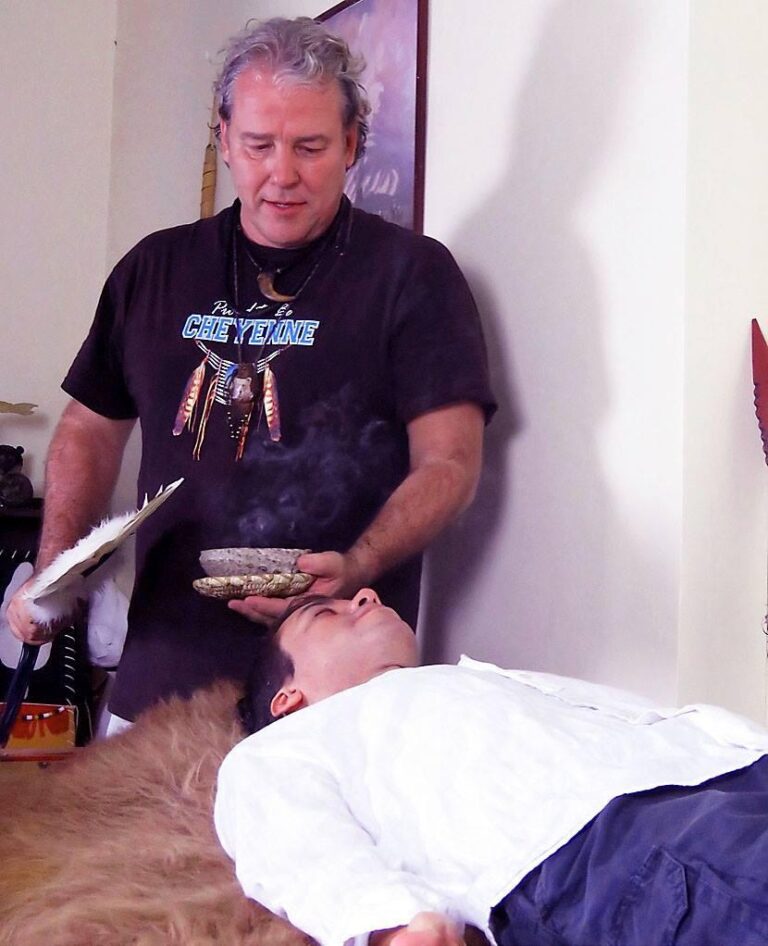
Sauer had the opportunity to go through different experiences, mainly in the Tent of Sweat, in which he received important cures that began to transform him. The experiences affected their way of thinking, acting, behavior, personality and even the way they were. It was the beginning of the shamanic studies, research and experiences that Sauer carries out until today.
Between 1987 and 1989, Sauer and his sister Maria Lucia felt that it was time to bring this knowledge to Brazil. Together, the holistic therapists taught the first shamanism courses in Rio de Janeiro at the Avatar space in Humaitá, where Paulo Coelho frequently promoted lectures.
Sauer stayed in Rio until 1991, when he decided it was time to return to the USA to acquire more knowledge, live new experiences and seek new masters.
Back in California, in 1992, Sauer began studying with Héctor Gomes, an Argentinian of Indian descent. Gomes introduced Sauer to the Peyote Ceremony, and the Brazilian continued to deepen his studies in the Sweat Tent ceremonies.
In 1995, Sauer invited Héctor Gomes to take the Peyote Ceremony to Brazil for the first time. The event was held in Aiuroca, Minas Gerais, with the support of a group of Brazilians from the Arco Íris Project, including Humberto Moller, Cristina Terra, Stela Guz, Laura Pedrotti, Tony Paixão and Ricardo Mattos. Cristina and Tony were introduced to Shamanism by Sauer and Gomes. Later the two would become Sauer’s spiritual brothers. Gomes paid another visit to the country the following year, where he performed a total of six ceremonies.
There were a few years of study with the Argentine, until in 1996 Sauer met one of Héctor’s masters: the elderly and spiritual leader Nelson Turtle. The American Indian, born on the Cheyenne tribe reservation in Oklahoma, USA, felt a strong connection with Sauer and adopted him as his son, as the Brazilian had just lost his biological father.
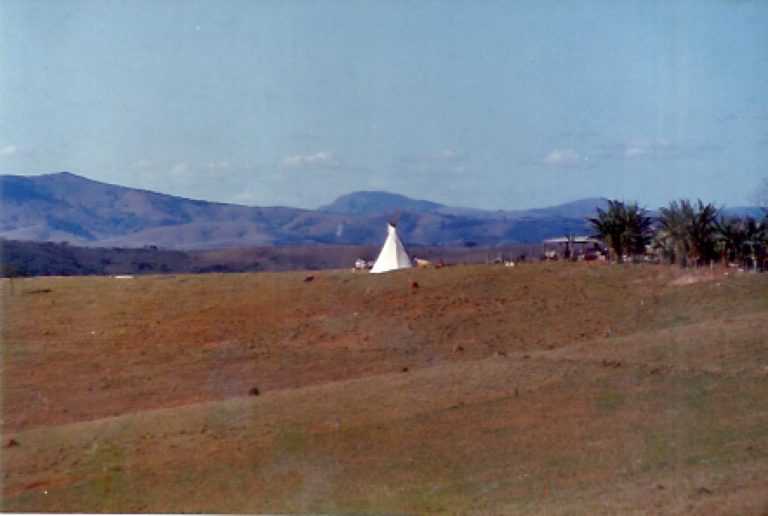
First Peyote ritual in Brazil
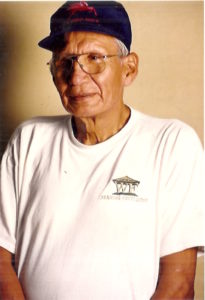
Nelson Turtle
The adoption process made Sauer a Cheyenne Indian and the young man went on to study directly with his father on the Red Path.
In 1997, it was Sauer’s turn to invite Nelson Turtle to come to Brazil. At the time, the American Indian adopted more Brazilian children and with that, Lino Py, Tony Paixão, Sthan Xannia, Rogério Favilla, Cristina Terra, Bull and Bill, among others, became Sauer’s brothers.
In Brazil, Nelson Turtle also promoted Peyote Ceremonies in Friburgo, at the Shangri-la inn, and the following year at Sacra Família, in Aldeia do Sol, owned by Bull and Bill. The North American Indian made five visits to the country, in 1997, 1998, 1999, 2000 and the last one in 2005.
Due to the fact that the sacred cactus, a plant used in the Peyote Ceremony, is not cultivated in Brazilian territory, only in the deserts of Mexico and the USA, Sauer understood that this ritual did not belong to native Brazilian customs and chose not to promote this ceremony in the Brazil.
In 2001, Sauer was surprised by his friend and teacher Michael Harner when he was invited to represent the Foundation of Shamanic Studies in Brazil. Harner also asked the holistic therapist to bring to Europe and the US the spiritualism work that Sauer learned from his Brazilian family.
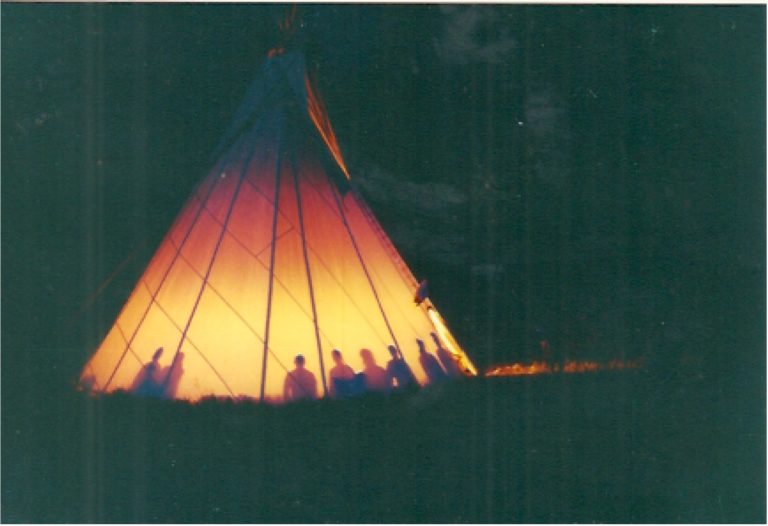
Cerimony do Peyote
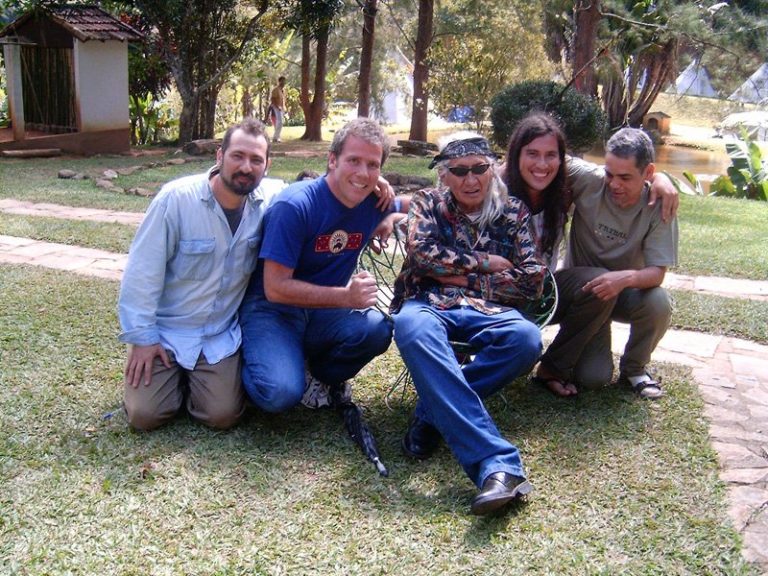
Tony, Carlos, Nelson, Lino and Rogério.
Still in the 2000s, Sauer, along with Lino Py, Tony Paixão and Rogério Favilla developed the Center for Shamanic Studies and together they carried out several works, ceremonies and courses. Among them, the Basic Shamanism Course, promoted in 2003 and 2004, and recognized by the Foundation for Shamanic Studies, USA. In addition, the group also brought several American Indians, teachers and spiritual leaders to hold events in Brazil. Among them, in 2001, was a Mohawk Indian from the Iroquois nation, named Crowbear. The Native American returned to the country two more times and also worked at Sitio das Pedras in Vargem Grande and at Aldeia do Sol in Sacra Família.
Later, in 2013, already in the process of moving to Brazil, Sauer with his brothers Cheyenne and Athamis Bárbara Barbosa brought the spiritual leader, Dennis Banks, from the Ojibwe tribe, from the Anishinabe nation, and his son Tantaka Banks, Lakota from the Sioux nation. , to Rio de Janeiro. Native Americans held meetings and ceremonies in the city, in Petrópolis, at the Mata Atlântica inn, in Sacra Família, in Aldeia do Sol. On that occasion, Dennis and Tatanka Banks consecrated and named two spaces of native traditions (Shamanism) in Rio de Janeiro: that of Athamis, which became known as Nowa-Cumig, in Cosme Velho, and that of Carlos Sauer and Bebetha Riso, who it was named Casa da Águia, in São Conrado.
In addition to contact with North American Indians, Sauer has always had relationships with Brazilian indigenous tribes and ethnicities. Therefore, when Nelson Turtle and Crowbear came to Brazil, Sauer, through his spiritual brothers Rosário Amaral and Paco Dutra, took the natives to form brotherhood alliances in Brazilian tribes, such as the Guarani village, in the north of Espírito Santo.
The alliances were signed with the Indians smoking a sacred Guarani pipe. Afterwards, Crowbear visited the same village again and with the presence of Cacique Tupã they traveled to the Krenaks indigenous reserve, where they found Cacique Itcho-cho. Together, they signed yet another alliance pact between brothers, a ceremony in which Carlos Sauer also participated.
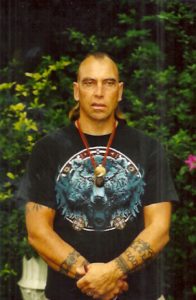
Crowbear
Sauer always knew the importance of experiencing Shamanism and focused the beginning of his career on performing rituals, ceremonies and individual consultations. In Europe and the USA, the Brazilian taught courses that he now brings exclusively to Rio de Janeiro, at Casa da Águia, in São Conrado, where he currently develops his work.
In addition to the projects carried out by Sauer, Brazilians had the chance to support the development and creation of some centers of Native North American traditions (shamanism). With that, he took his spiritual masters to these places. Sauer shared his knowledge and offered ideas and suggestions. Some of these spaces are Aldeia do Sol, by Bull and Bill, Nowa-Cumig, by Athamis Barbosa and Casa da Águia, by Carlos Sauer and Bebetha Riso.
Want to know more about our Courses and Events? Contact us!
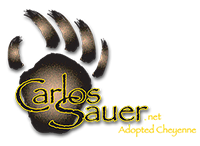
My name is Carlos Sauer, I was born in 1959, in Brazil. I am a holistic therapist, teacher, lecturer, and I was adopted in 1993 by an indigenous Cheyenne elder named Nelson Turtle. I introduced North American Native Traditions (Shamanism), including the Sweat Tent ceremony in Brazil in 1988.
FAST LINKS
@ All rights reserved to Carlos Sauer.